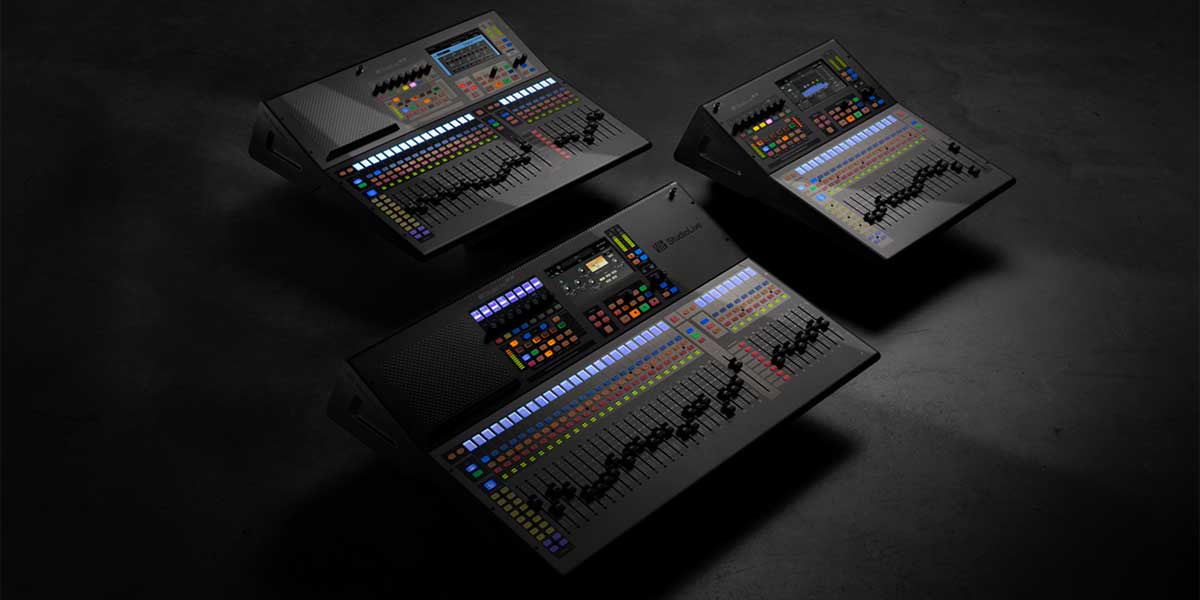What Is the Relevance of Audio Networks in the AV Industry?
The increasing relevance of audio network technology in the AV industry has become a strategic topic for all verticals. They highlight the inevitability of fully-networked solutions, emphasising how audio networking has become integral to modern AV setups.
“Without any doubt. Except for a couple of small niches, those manufacturers that are not working on fully-networked solutions will be out of the market in 5 years,” states Santiago Alcalá, Product Manager at d&b audiotechnik.
Genio Kronauer, Executive Director of Electronics and Networks at L-Acoustics, is convinced of the inevitability of fully-networked solutions: “No matter if we like it or not, it's a fact. Therefore, we [the manufacturers] need to provide the best solution for our users”.
What are the next steps in the development of network technology?
The future of audio, as they foresee, lies in seamless integration and user-friendly audio networking, enhancing the overall AV experience.
The importance of user-friendly audio networking is also emphasised, simplifying setup processes and empowering AV professionals to focus on creativity and innovation. FOH and Audio Systems Engineer Néstor Varela has a clear perspective on the end-user expectations: “When we talk about audio network technology as all the technologies in the audio business, what we expect is for them to be easy. They must work the same way as analogue [connections] are working”.
For Ethan Wetzell, Marketing Committee Chairman at the OCA Alliance, convergence and unification of audio technologies are critical aspects of ensuring compatibility and synergy among various audio devices: “Where I think we're going to see the next step is going to be the increasing convergence and unification of these technologies”.
As a manufacturer, how do you approach the implementation of open standards?
Audio network implementation is a complex topic that is a challenge for all manufacturers. It implies allocating resources, time and expertise that could be dedicated to developing each manufacturer’s unique value propositions.
Marcus Rembould, Product Manager at d&b audiotechnik, points out open standards as a reliable basis for audio network technology: “I think one of the most obvious complexities is that many manufacturers still approach this from a proprietary approach. They do not see that there are interesting standards that allow easy integration of network technology in your products and also interoperability between different devices and manufacturers”.
For Matthias Christner, Head of R&D at d&b audiotechnik, the current complex learning curves to set up and use AoIP is an entry barrier for many end-users. “This is a task for us, the manufacturers, to provide the network infrastructure to the operators, the users, to integrate things. And we should not leave this task to the users themselves.”
While audio network connections reach the inflexion point in mass adoption, this functionality will quickly shift from a nice-have to a must-have to integrate into networked systems. And this requires strategic approaches.
Genio Kronauer emphasises the significance of strategic partnerships in driving AV technology forward, creating a collaborative environment for continued innovation: “It is too big for one company, and strategic partnerships are very important to move things forward in the direction of all our users, that use the network independently of the brands”.
What are the advantages of Standardised Network Technology in AV?
Open standard protocols play a pivotal role in audio network implementations, and our experts shed light on their advantages.
Standardisation saves time and costs during product development, streamlining the design and manufacturing process.
For Santiago Alcalá, “This is the next logical step after a long time of dependency on proprietary solutions. Now the technology is mature enough for this logical step”.
Moreover, it ensures reliability and consistency across various AV setups, while the extensive support from a global community of engineers bolsters the growth and evolution of AV technology.
“This is a big advantage because it can save me money, it can get me better time to market”, says Ethan Wetzell, “I can develop my products more reliably, and I have a community that I can fall back on for development support and tool development”.
What is the Relevance of MILANTM in Professional Audio Networks?
We have asked the experts to share their insights on the relevance of the MILANTM protocol in professional audio networks.
Pro Audio Market Specialist Henning Kaltheuner defines MILANTM as “a project where tough competitors have started to collaborate, and this is what makes MILANTM special. It is a project beyond technology”.
Henning Kaltheuner highlights some of the benefits MILANTM technology has brought for the pro audio: “It has made audio networks very simple, and it can be handled even by uneducated users. But it also scales into bigger projects”.
#thefutureisnetworked
As we embrace these transformative technologies and foster collaboration within the AV community, we move closer to realising a future where audio networking truly revolutionises how we experience and interact with professional audio.








.png)